|
Wellington Mk.X
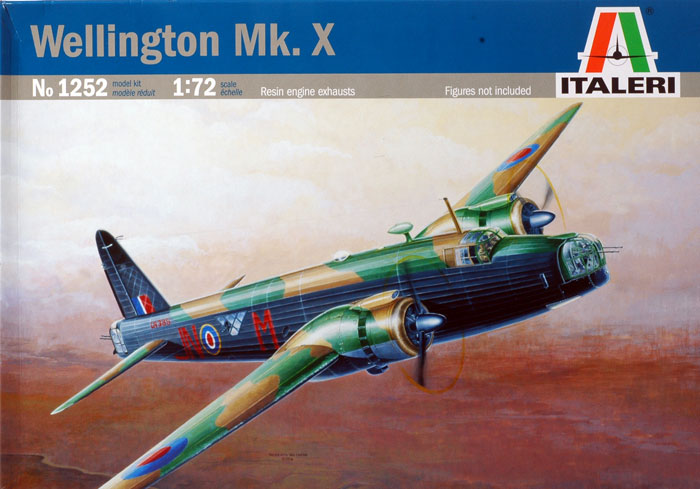
Italeri, 1/72 scale
S u m m a r y
|
|
Catalogue Number: |
Italeri No. 1252 -
Wellington Mk.X |
|
Scale: |
1/72 |
| Contents and
Media: |
around 138
parts in grey plastic; 19 clear plastic parts; markings for
six aircraft. |
| Price: |
GBP£9.35 available online from Hannants website and
retailers worldwide |
| Review Type: |
FirstLook |
| Advantages: |
Most numerous variant
of this important aircraft; accurate outline; good level of detail; useful options;
high
quality clear parts. |
| Disadvantages: |
Some extra time test-fitting will be
advisable |
|
Recommendation: |
Highly Recommended |
Reviewed by Brett Green

Italeri's 1/72 scale Wellington Mk.X will
be available online from Squadron.com
With a production run of more than 3,800, the Wellington Mk.X was the
most numerous variant of this most numerous WWII British bomber. The
main difference between the Mk.X and the Mk.III was the installation of
the more powerful Bristol Hercules VI or XVI engine. A large intake was
fitted to the top of each engine cowling, and the familiar "hedgehog"
exhaust was often fitted.
IPMS Stockholm has a walkaround of a preserved Wellington Mk.X on
their website, which will be useful reference for modellers.
The latest in the line of co-operative projects with Czech model
manufacturer MPM is Italeri's new 1/72 scale Wellington Mk.X. This kit shares
a number of parts of the MPM Wellington Mk.IC. Revised and new parts include the engines
and cowlings, intake scoops, propellers, hedgehog exhausts, revised
turret parts, horizontal stabilisers and inserts to blank off the long
fuselage windows. The fuselage of the Italeri kit is also revised to
include the rear fuselage windows. Despite the strong family resemblance to its
predecessor, we are presented with a substantially different kit.
Italeri's Wellington Mk.X comprises around 138 parts (including 64
marked not for use) in medium grey coloured, long run injection moulded
styrene, an additional 19 injection moulded clear parts and two parts in
cream coloured resin. All the parts feature small sprue attachment
points and are crisply moulded. There are no sink marks present on
visible surfaces, and only about ten ejector pin marks on the inside of
each fuselage half. This is not a criticism, as these marks are a
necessary evil of the injection moulding process.
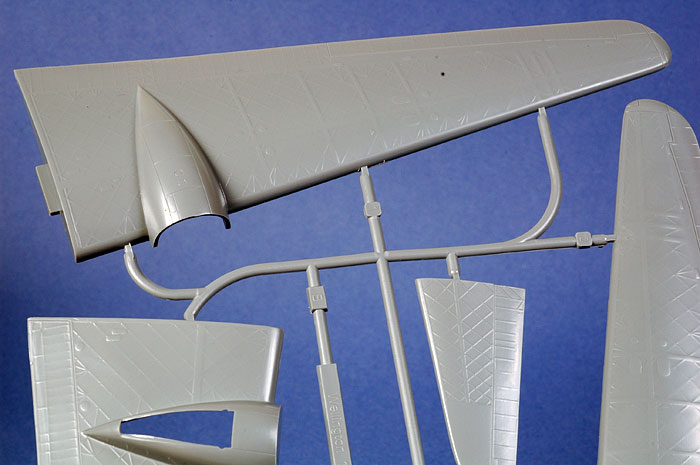
Click the thumbnails below to view larger
images:
[../../../photogallery/photo00018555/real.htm]
The Wellington featured a unique "geodetic" cross-hatched framework. On
the real aircraft, the diamond grid of the structure showed through
fabric surfaces. In my opinion, the Italeri kit captures this geodetic
pattern very well with softly raised framework on the wings and
tailplanes. The fuselage exterior is finished in a combination of fabric
texture and finely raised ribs. The interior of the fuselage is detailed
with a cross-hatch geodetic pattern. The bomb bay panels are crisply
recessed. The combined effect of these surface features looks quite
authentic to my eye.
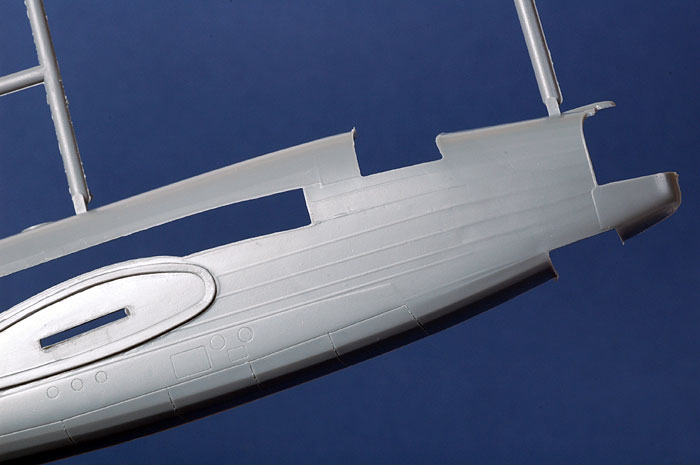
The smaller details have not been ignored either. The pilot's seat,
floor and rear bulkhead are nicely detailed. The instrument panel is
presented "a la Tamiya" with recessed blank dials. I like this option,
as it offers to opportunity to use individual decal instruments.
Transparent parts are quite clear and relatively free of distortion.
Each turret comprises twelve parts, including four clear parts that must
be glued together. Extreme care will be required to avoid messing up
these clear parts with excess glue. I will be dipping the parts in
Future and using tiny spots of super glue to secure my clear turret
pieces.
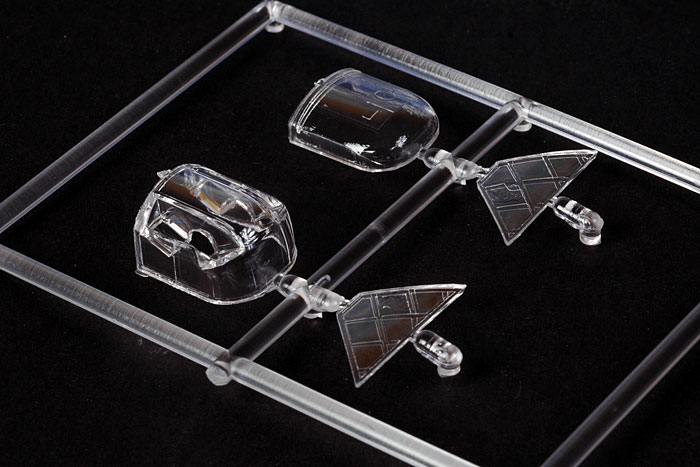
Other details, including the undercarriage bays, gear legs and engines,
are also very nice. The gear bays are split vertically, and have detail
moulded onto their sidewalls. Superdetailers may choose to add more
wiring detail to the engines, but it is not entirely necessary in this
scale.
The inclusion of two delicately detailed resin hedgehog exhausts is a
nice bonus.
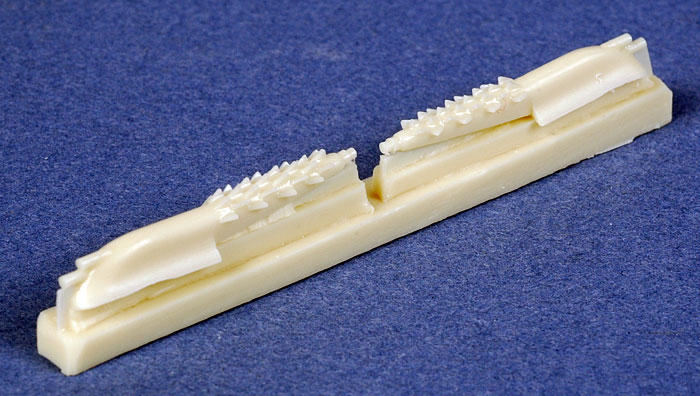
Kit engineering is solid. The wings and tailplanes are secured with the
assistance of slots and tabs. The larger parts, including the fuselage
halves, feature locating pins too. The only really tricky aspect will be
the clean installation of the insert that blanks off the long fuselage
windows. Some considerable care will be required to blend this part
perfectly.
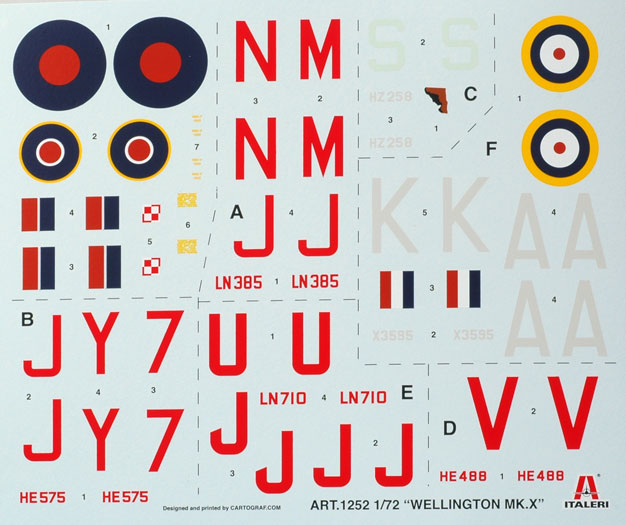
Six marking options are offered, including two from 304 Sqn in expedient
Coastal Command schemes of faded Dark Earth and Dark Green with White
lower surfaces and fuselage sides. The other four are conventional
Bomber Command colours of Dark Earth, Dark Green and Night Black. Decals
are nicely printed with a flat texture and minimal carrier film.
Registration on my decals was perfect.
Italeri's 1/72 scale Wellington is another example of the continuous
improvement in quality on the part of Czech model manufacturers, and of
the emerging partnerships between model companies in Eastern and Western
Europe.
With its attractive surface texture, logical parts breakdown, narrow
sprue connectors, injection-moulded clear parts and locating pins on
larger parts, there is little left to define this Wellington as "limited
run". The kit should be within the capabilities of the average modeller,
with no special skills required. However, any bomber kit will inevitably
present some construction challenges, so careful preparation and
continuous test fitting will be the order of the day.
Italeri's new 1/72 scale Wellington Mk.X will be welcomed by all fans of
WWII British bombers - newcomers to the hobby and superdetailing experts
alike.
Highly Recommended.
Thanks to Italeri for the review sample.
Review Text and
Images Copyright © 2007 by Brett Green
Page Created 19 March, 2007
Last updated 24 December, 2007
Back to HyperScale Main Page
Back to Reviews Page
|
Home
| What's New |
Features |
Gallery |
Reviews |
Reference |
Forum |